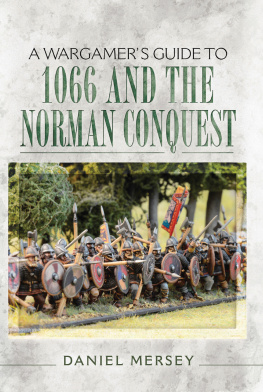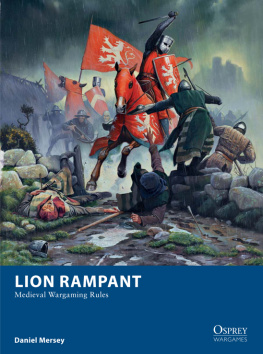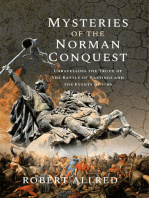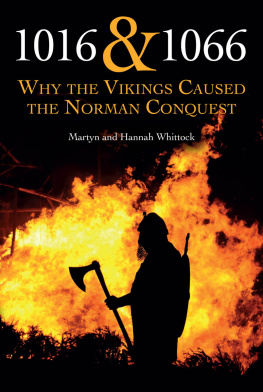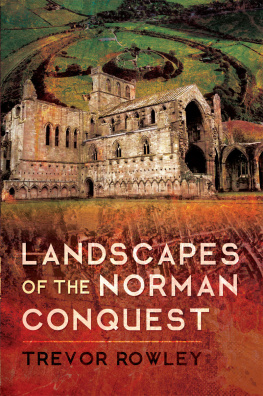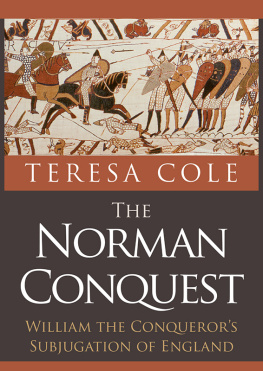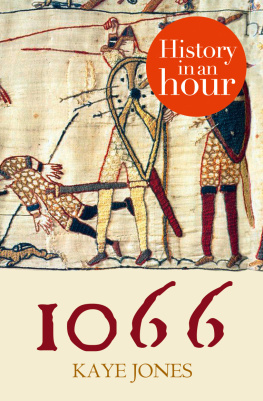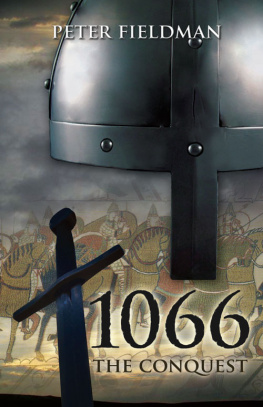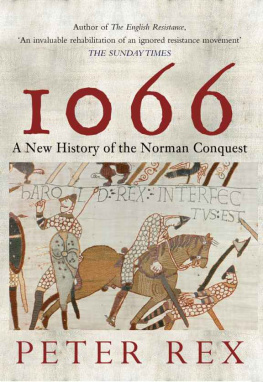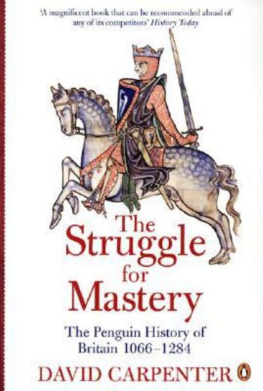Daniel Mersey - A Wargamers Guide to 1066 and the Norman Conquest
Here you can read online Daniel Mersey - A Wargamers Guide to 1066 and the Norman Conquest full text of the book (entire story) in english for free. Download pdf and epub, get meaning, cover and reviews about this ebook. year: 2017, publisher: Pen & Sword Books, genre: History. Description of the work, (preface) as well as reviews are available. Best literature library LitArk.com created for fans of good reading and offers a wide selection of genres:
Romance novel
Science fiction
Adventure
Detective
Science
History
Home and family
Prose
Art
Politics
Computer
Non-fiction
Religion
Business
Children
Humor
Choose a favorite category and find really read worthwhile books. Enjoy immersion in the world of imagination, feel the emotions of the characters or learn something new for yourself, make an fascinating discovery.
- Book:A Wargamers Guide to 1066 and the Norman Conquest
- Author:
- Publisher:Pen & Sword Books
- Genre:
- Year:2017
- Rating:3 / 5
- Favourites:Add to favourites
- Your mark:
- 60
- 1
- 2
- 3
- 4
- 5
A Wargamers Guide to 1066 and the Norman Conquest: summary, description and annotation
We offer to read an annotation, description, summary or preface (depends on what the author of the book "A Wargamers Guide to 1066 and the Norman Conquest" wrote himself). If you haven't found the necessary information about the book — write in the comments, we will try to find it.
A Wargamers Guide to 1066 and the Norman Conquest — read online for free the complete book (whole text) full work
Below is the text of the book, divided by pages. System saving the place of the last page read, allows you to conveniently read the book "A Wargamers Guide to 1066 and the Norman Conquest" online for free, without having to search again every time where you left off. Put a bookmark, and you can go to the page where you finished reading at any time.
Font size:
Interval:
Bookmark:

A Wargamers Guide to 1066 and the Norman Conquest
Daniel Mersey has written several sets of Dark Ages and medieval miniatures rules including Glutter of Ravens (1998), Song of Arthur and Merlin (Ganesha, 2008), Dux Bellorum (Osprey Games, 2012), and Lion Rampant (Osprey Games 2015) and he has been a regular contributor to hobby magazines since the mid-1990s, well-known for his articles on the British early medieval period. He currently resides within a days march of Hastings, having previously lived a javelins throw from the battlefield at Fulford.
By Daniel Mersey

First published in Great Britain in 2017 by
Pen & Sword Military
an imprint of
Pen & Sword Books Ltd
47 Church Street
Barnsley
South Yorkshire
S70 2AS
Copyright Daniel Mersey 2017
ISBN 978 1 47384 846 7
eISBN 978 1 47384 847 4
Mobi ISBN 978 1 47384 848 1
The right of Daniel Mersey to be identified as the Author of this Work has been asserted by him in accordance with the Copyright, Designs and Patents Act 1988.
A CIP catalogue record for this book is available from the British Library
All rights reserved. No part of this book may be reproduced or transmitted in any form or by any means, electronic or mechanical including photocopying, recording or by any information storage and retrieval system, without permission from the Publisher in writing.
Pen & Sword Books Ltd incorporates the imprints of Pen & Sword Archaeology, Atlas, Aviation, Battleground, Discovery, Family History, History, Maritime, Military, Naval, Politics, Railways, Select, Transport, True Crime, and Fiction, Frontline Books, Leo Cooper, Praetorian Press, Seaforth Publishing and Wharncliffe.
For a complete list of Pen & Sword titles please contact
PEN & SWORD BOOKS LIMITED
47 Church Street, Barnsley, South Yorkshire, S70 2AS, England
E-mail:
Website: www.pen-and-sword.co.uk
Thanks to my historical researcher, Simon Bell, for his assistance and input (and for always letting me win on the tabletop), and to Philip Sidnell at Pen and Sword for his patience and guidance as I fought my own battle with deadlines.
Thanks to the following contributors for kindly supplying photographs (and thus shielding the readers eyes from too much of my own brushwork): Daniel Faulconbridge at Wargames Illustrated , Nick Eyre at North Star Military Figures, Tom Webster-Deakin, Terry Pilling, Peter Dennis, and Michael Leck.
1066 is one of the most iconic dates in British history. Ask a modern Briton to name a year where something of historical importance happened and the chances are youll be told this year. Ask them to name a famous battle and theres a reasonable chance theyll respond with Hastings (otherwise, non-wargamers usually mention either Waterloo or Trafalgar). The year 1066 heralded the coming of the Norman rulers of Britain, and the beginning of the decline of Anglo-Saxon England. However, the Norman Conquest was not an overnight success, nor did all of the English earls disappear quickly or quietly. Despite this, a popular view of the coming of the Normans is, as Sellar and Yeatman tell us in their seminal, if tonguein-cheek, history of the British Isles:
The Norman Conquest was a Good Thing, as from this time onwards England stopped being conquered and thus was able to become a top nation.
(WC Sellar and RJ Yeatman, 1066 And All That , 1931)
Of course, both the Battle of Hastings and the year 1066 are important events in the history of the British Isles, but theres much more to the military campaign accompanying the Norman invasion than a single battle and a single year.
The late-eleventh century British Isles provides a fascinating backdrop to wargaming: tactically it can be seen as the major turning point from ancient to medieval warfare in Britain; strategically, a powerful minority strove to control a greater, unfriendly populace; borders were threatened both from overseas and the Celtic Fringe; and the decade either side of 1066 was not short of colourful military characters. Added to this, there are two distinct levels of warfare being fought at this time: the large, kingdom-forging battles that usually came once or twice within a reign but occurred three times in 1066 alone; and small-scale skirmishes typifying the guerrilla warfare carried out in the years of conquest after 1066.
This book is not a history book plenty of good books have been written about this period by better historians than I its a wargaming sourcebook, full of the sort of data that Ive found helpful to collect over the years to use in my games, and that I hope will point you in the right direction whether youre getting started or are already a veteran of wargaming the British early medieval period (which will always be known to wargamers the as The Dark Ages, no matter what term historians use!). It is a wargamers introduction to the history of the period, focussing on the battles fought, the armies involved, and how best to transport them from the annals of history to your tabletop battlefield.
The exact circumstances which brought William, Duke of Normandy, to the south coast of Anglo-Saxon England in September 1066 have been a source of intense debate since history became a professional academic discipline. One reason for this is the relative scarcity of reliable primary sources. Those that do exist are partial in both senses, leaving large areas of the story untold while generally favouring, and embellishing, the case for William as a rightful claimant to the English throne. Propaganda was the name of the game and, as the famous saying goes, history is written by the winner: it isnt only the Bayeux Tapestry thats embroidered.
What can be said with certainty is that William felt not only that his claim was strong, but that it had the approval of his predecessor. At some point early in the 1050s, the childless English king, Edward the Confessor, seems to have indicated that his successor would be his first cousin once removed, William, and to have gone as far as promising him the throne (which did not sit well as a promise against English law). This was a bold move, coming as it did from a king who spent most of his reign struggling to suppress the control of the mighty family of Godwin, Earl of Wessex. Godwin had been Edwards father-in-law from 1045 until his death in 1053, and had spent most of Edwards reign working to establish the primacy of his family amongst the nobility of England and securing succession to the throne for one of his five sons.
The Godwins were what a modern person might describe as a problem family: Godwins eldest son, Swein, had to leave England in a hurry in 1049 after abducting the Abbess of Leominster with a view to forcing marriage upon her and seizing her lands. He subsequently had to flee again the following year after arranging the murder of his cousin and, despite being allowed back through Godwins influence, was exiled for life in 1051. Swein died in 1052, leaving Godwins second son, the militaristic Harold, as the focus of his familys dynastic ambitions. But it was the younger, yet equally turbulent sibling, Tostig, who would come to play a central role in the events of 1066.
Against the backdrop of lawlessness which seemed to accompany the Godwinsons (as Godwins sons are collectively known), it was perhaps not surprising that Edward should reach out for a steadier successor in William. Edward had spent much of his life in exile, probably mostly in Normandy, following the ousting of his father, Aethelred, by Danish invaders under Swein Forkbeard, and the death of his brother, Edmund Ironside, in 1016. It is probable that he retained some sympathy for Normandy when he returned to England in extraordinary circumstances in 1041.
Next pageFont size:
Interval:
Bookmark:
Similar books «A Wargamers Guide to 1066 and the Norman Conquest»
Look at similar books to A Wargamers Guide to 1066 and the Norman Conquest. We have selected literature similar in name and meaning in the hope of providing readers with more options to find new, interesting, not yet read works.
Discussion, reviews of the book A Wargamers Guide to 1066 and the Norman Conquest and just readers' own opinions. Leave your comments, write what you think about the work, its meaning or the main characters. Specify what exactly you liked and what you didn't like, and why you think so.

